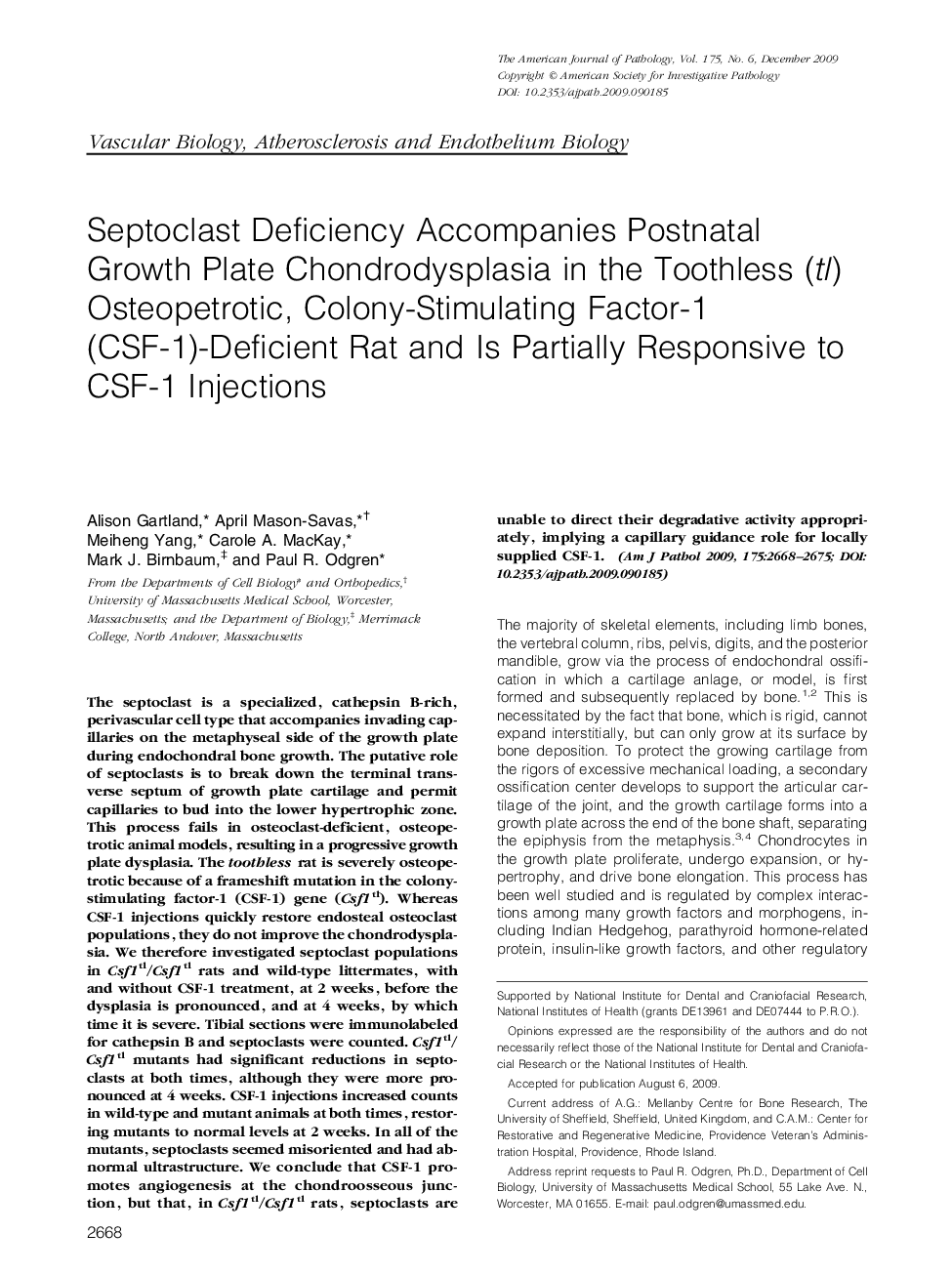| Article ID | Journal | Published Year | Pages | File Type |
|---|---|---|---|---|
| 5936452 | The American Journal of Pathology | 2009 | 8 Pages |
The septoclast is a specialized, cathepsin B-rich, perivascular cell type that accompanies invading capillaries on the metaphyseal side of the growth plate during endochondral bone growth. The putative role of septoclasts is to break down the terminal transverse septum of growth plate cartilage and permit capillaries to bud into the lower hypertrophic zone. This process fails in osteoclast-deficient, osteopetrotic animal models, resulting in a progressive growth plate dysplasia. The toothless rat is severely osteopetrotic because of a frameshift mutation in the colony-stimulating factor-1 (CSF-1) gene (Csf1tl). Whereas CSF-1 injections quickly restore endosteal osteoclast populations, they do not improve the chondrodysplasia. We therefore investigated septoclast populations in Csf1tl/Csf1tl rats and wild-type littermates, with and without CSF-1 treatment, at 2 weeks, before the dysplasia is pronounced, and at 4 weeks, by which time it is severe. Tibial sections were immunolabeled for cathepsin B and septoclasts were counted. Csf1tl/Csf1tl mutants had significant reductions in septoclasts at both times, although they were more pronounced at 4 weeks. CSF-1 injections increased counts in wild-type and mutant animals at both times, restoring mutants to normal levels at 2 weeks. In all of the mutants, septoclasts seemed misoriented and had abnormal ultrastructure. We conclude that CSF-1 promotes angiogenesis at the chondroosseous junction, but that, in Csf1tl/Csf1tl rats, septoclasts are unable to direct their degradative activity appropriately, implying a capillary guidance role for locally supplied CSF-1.
